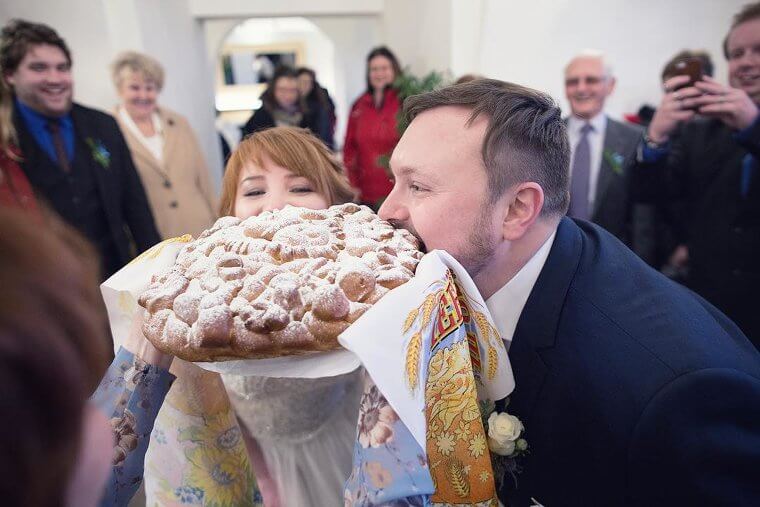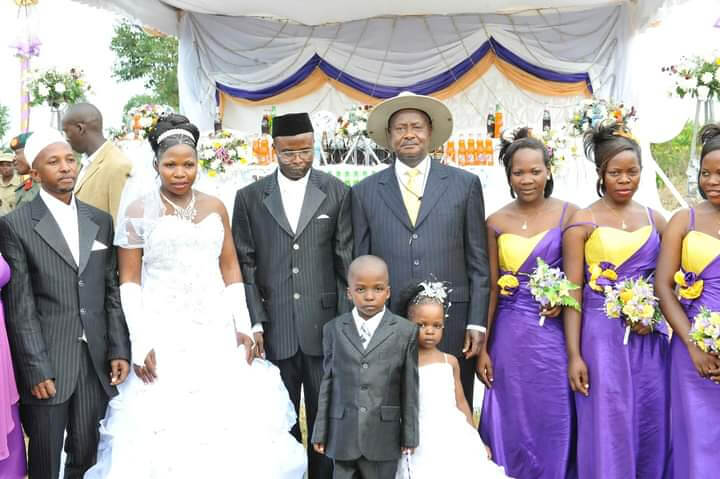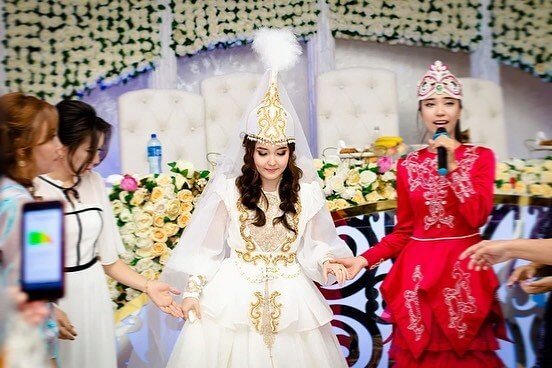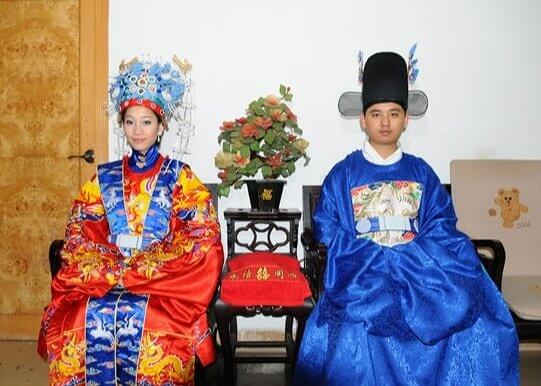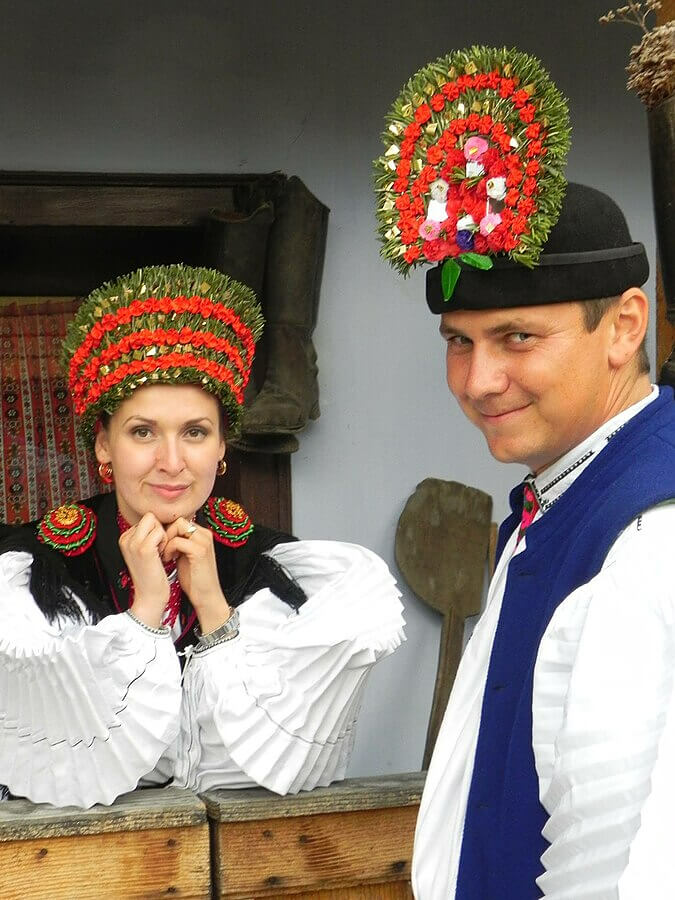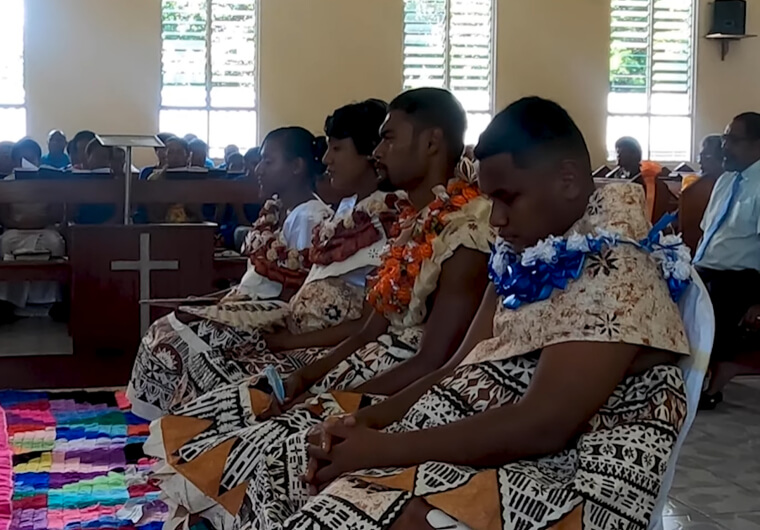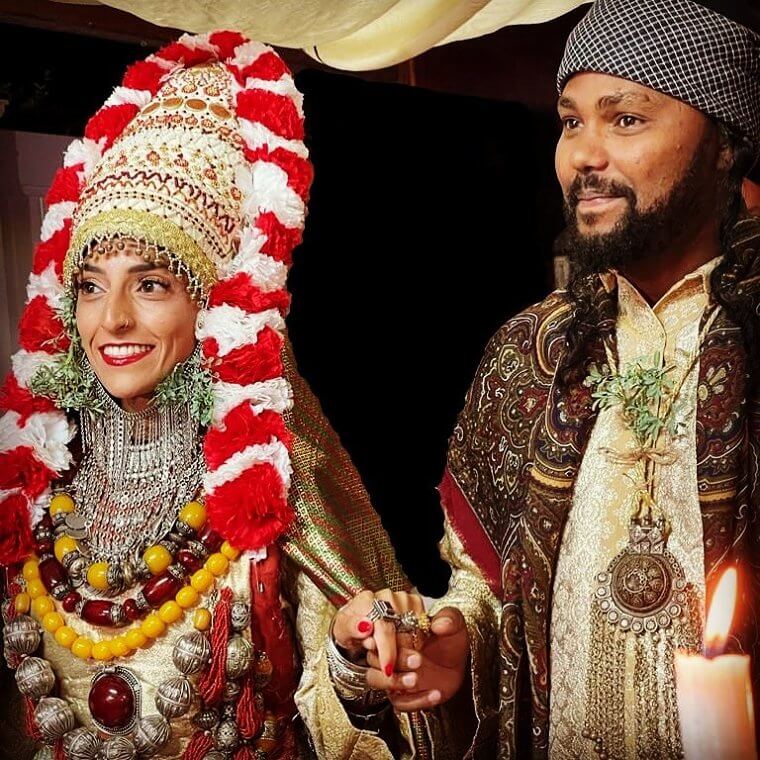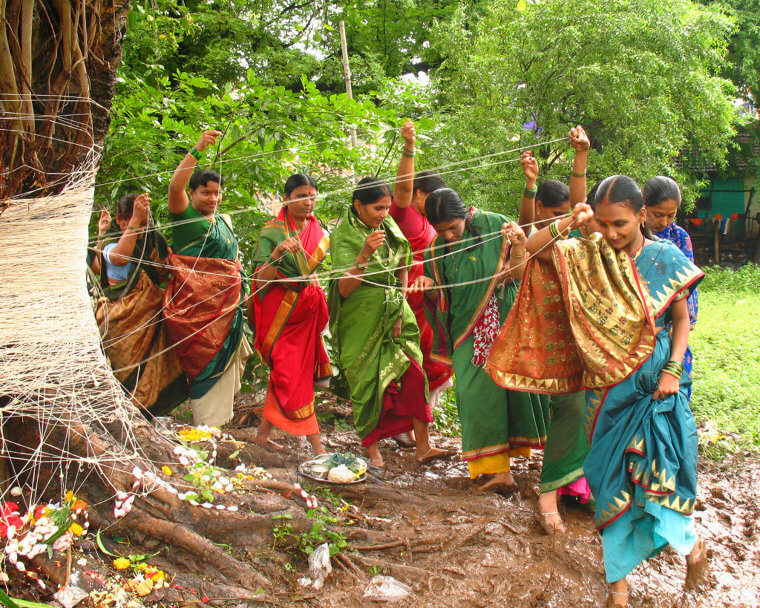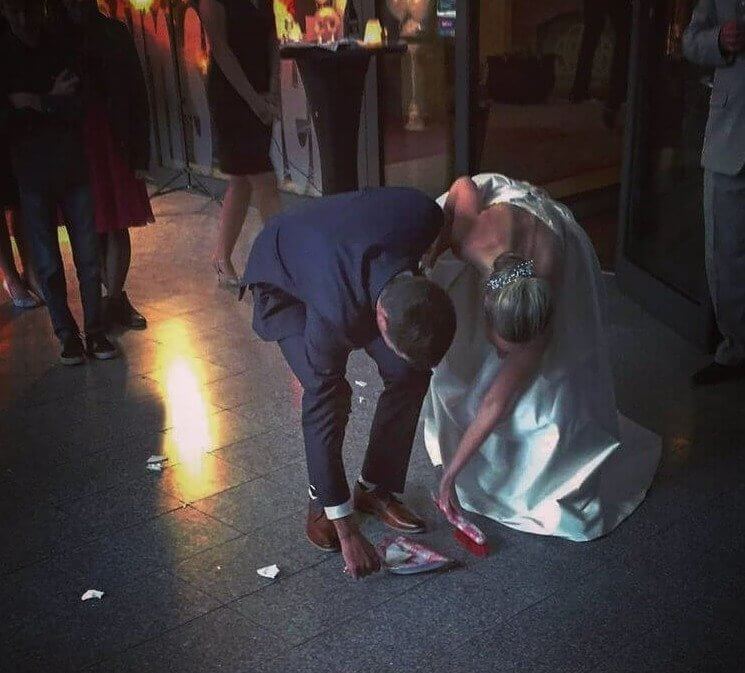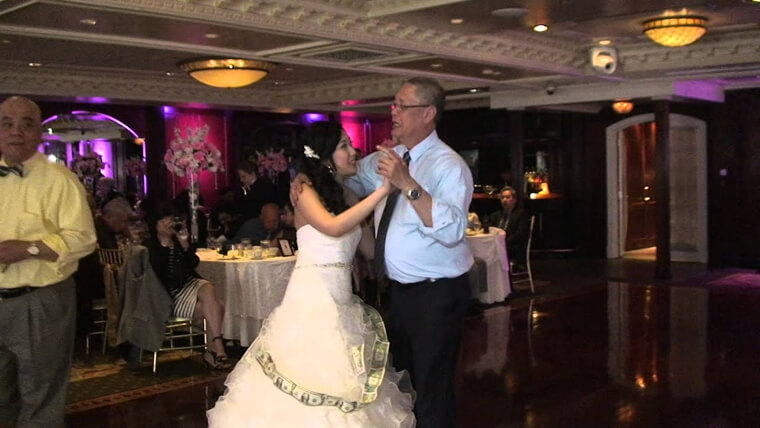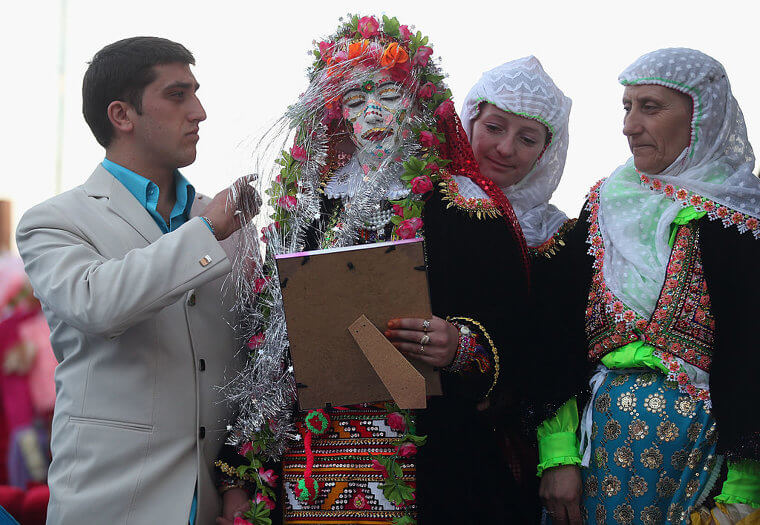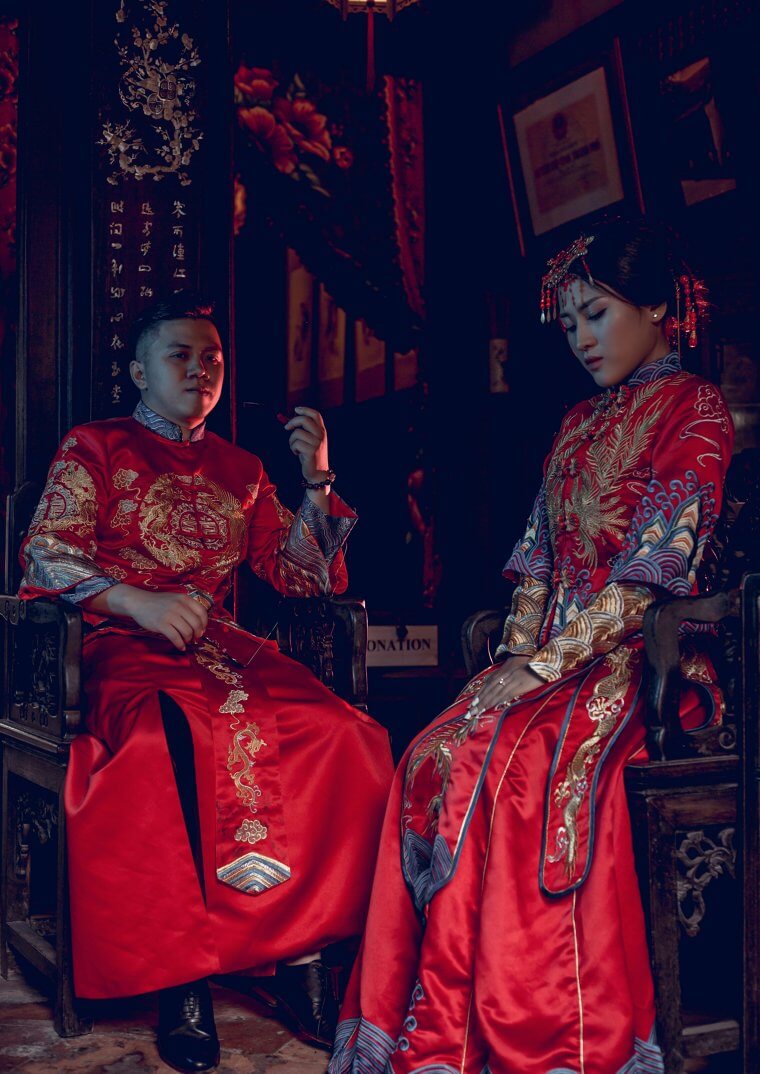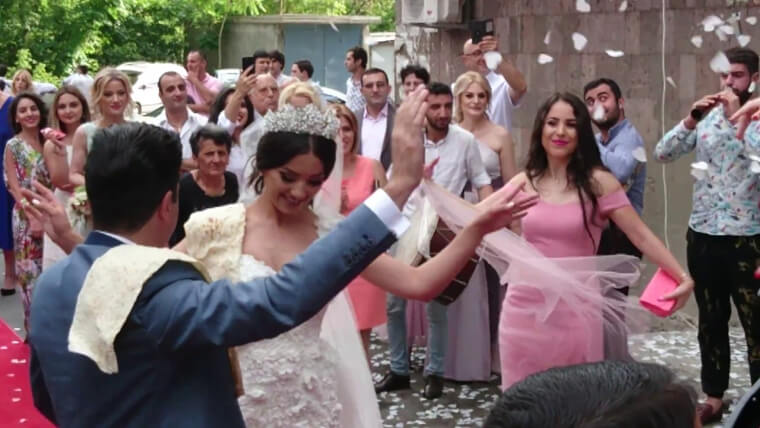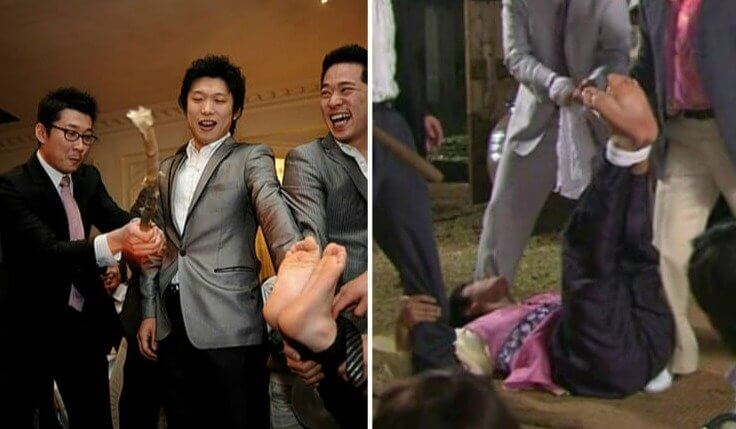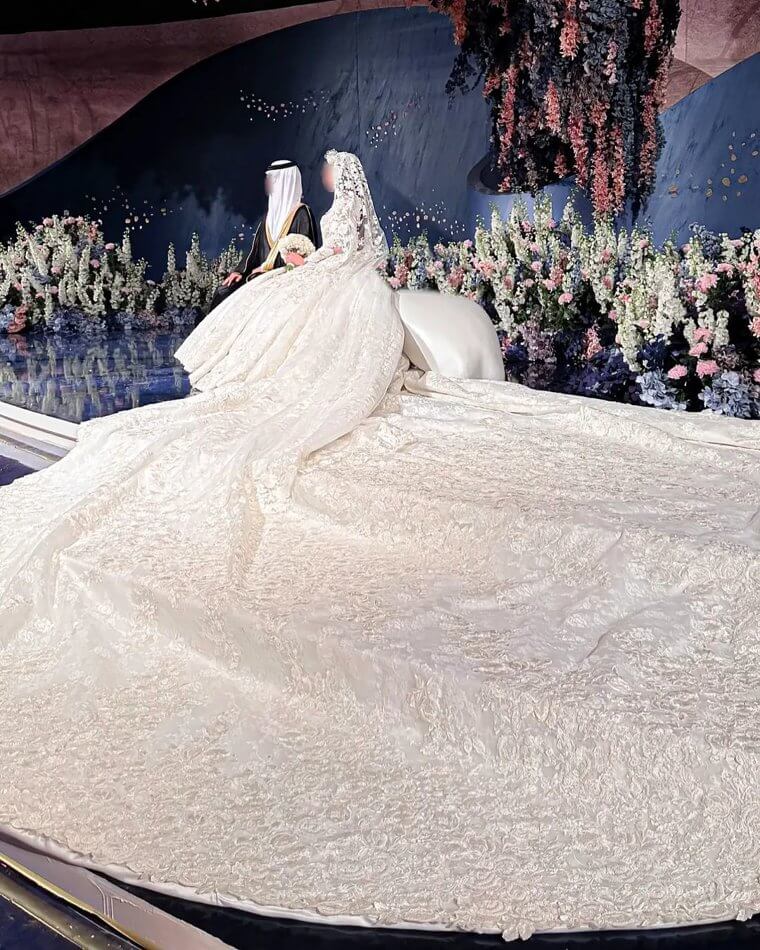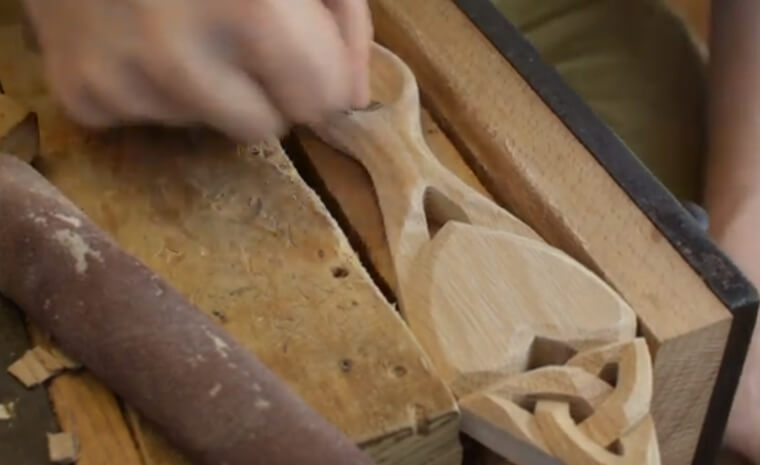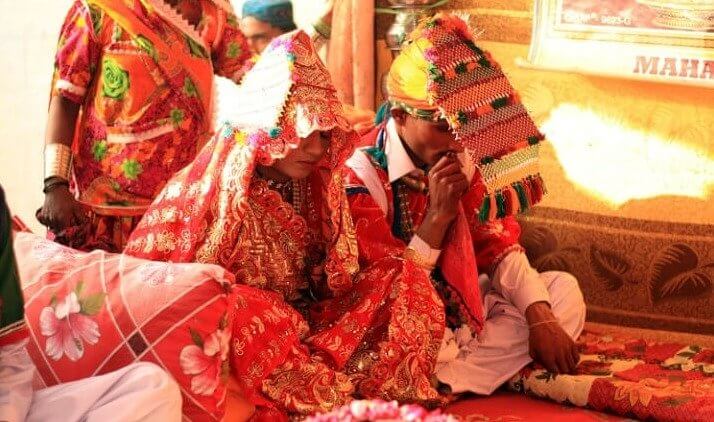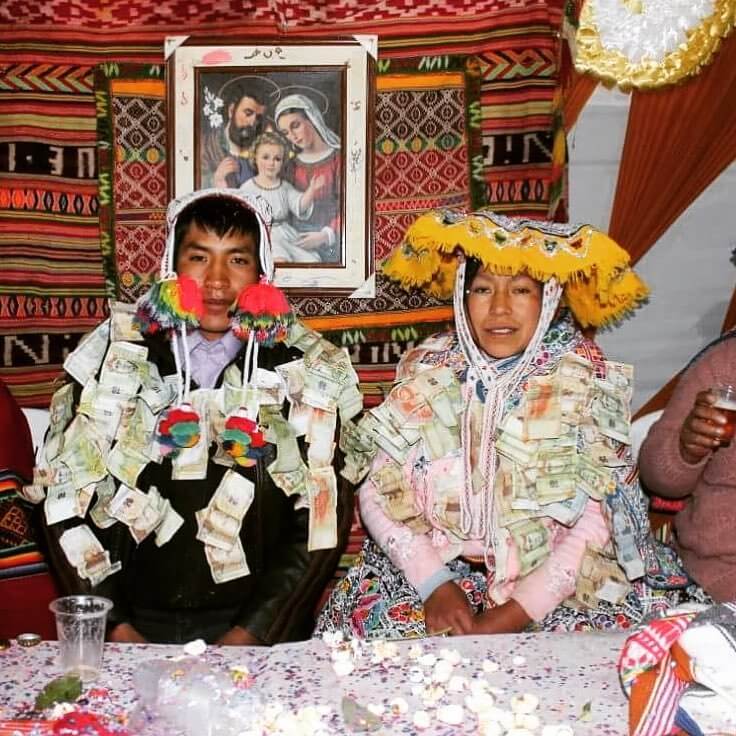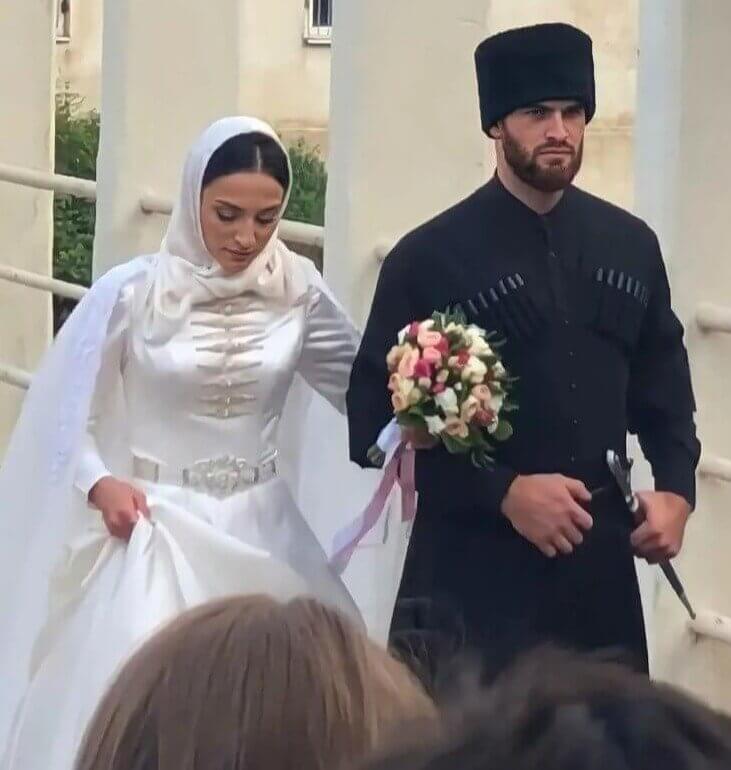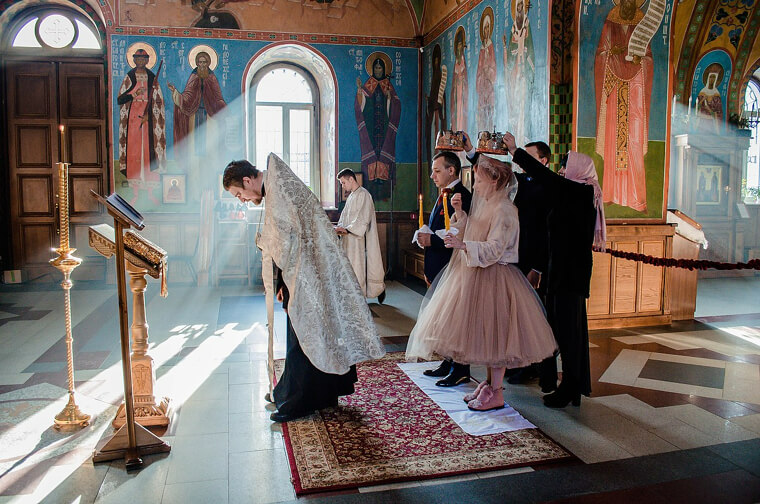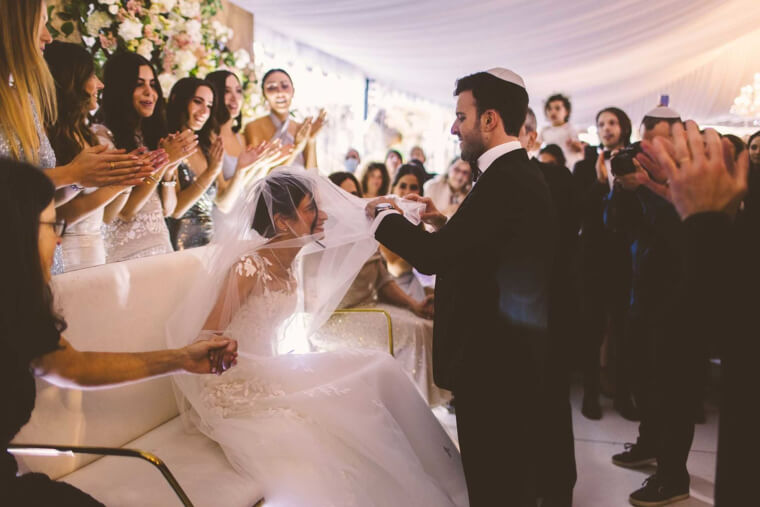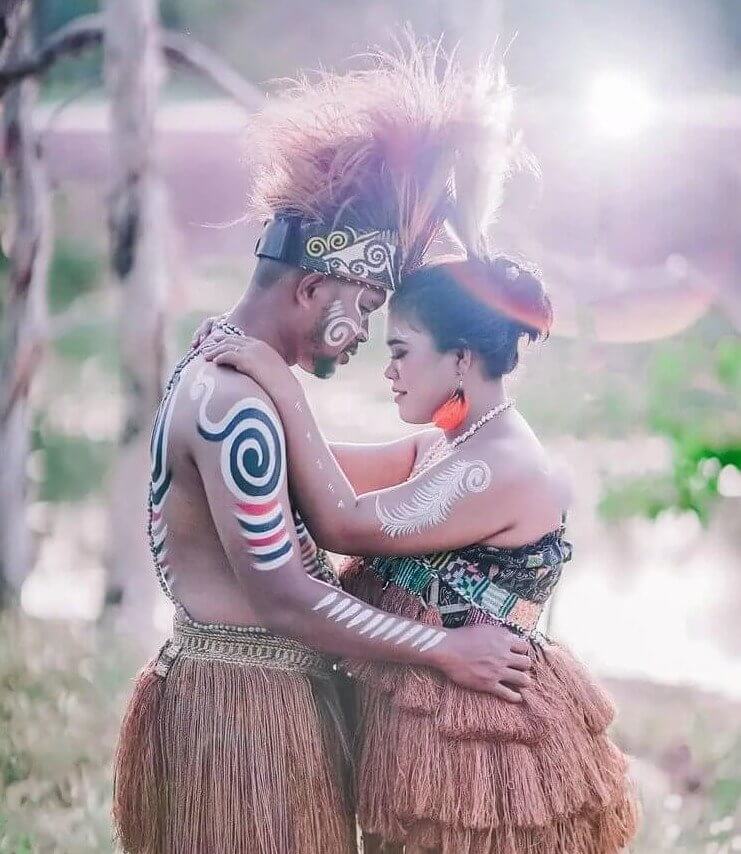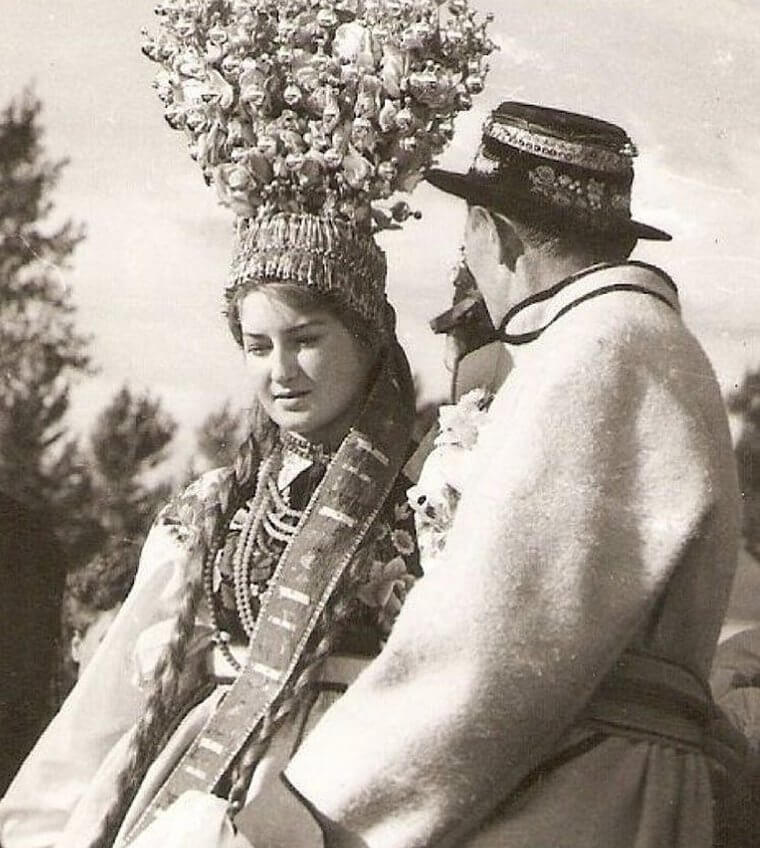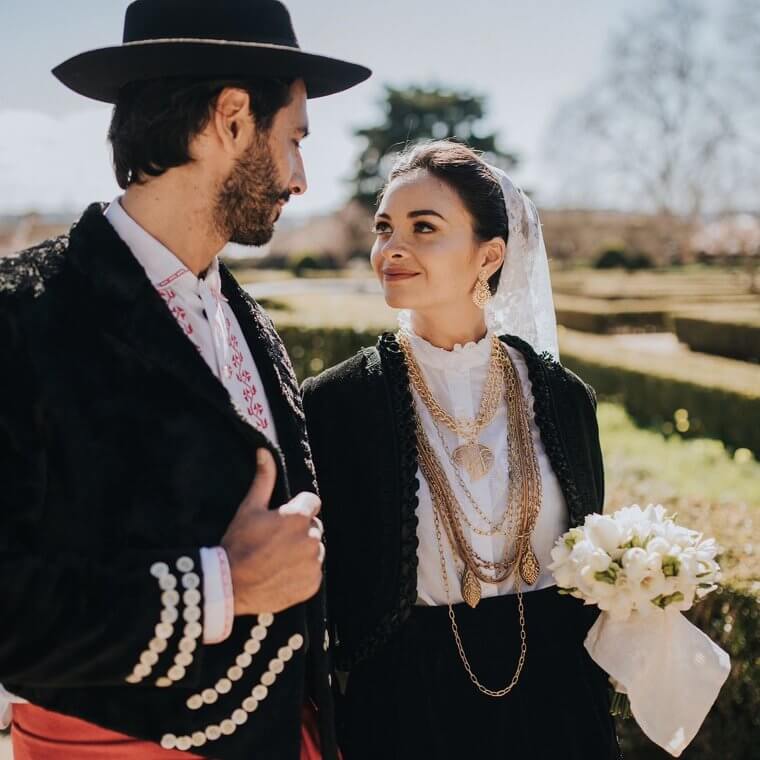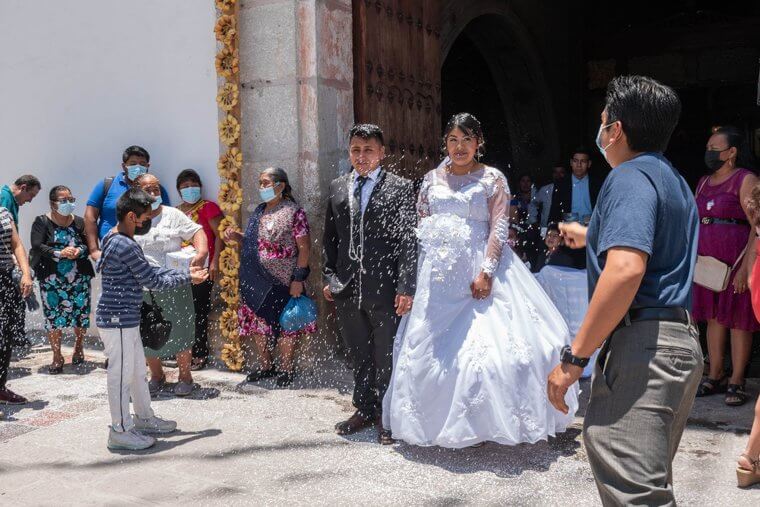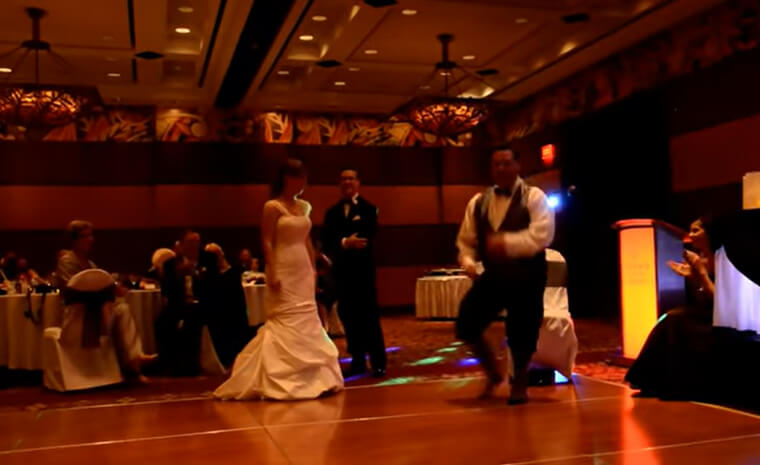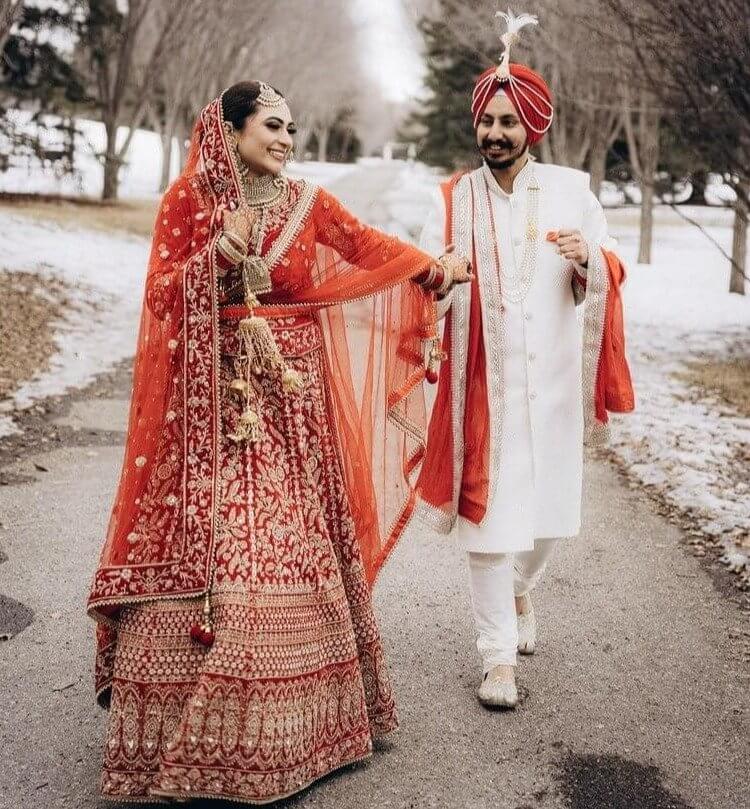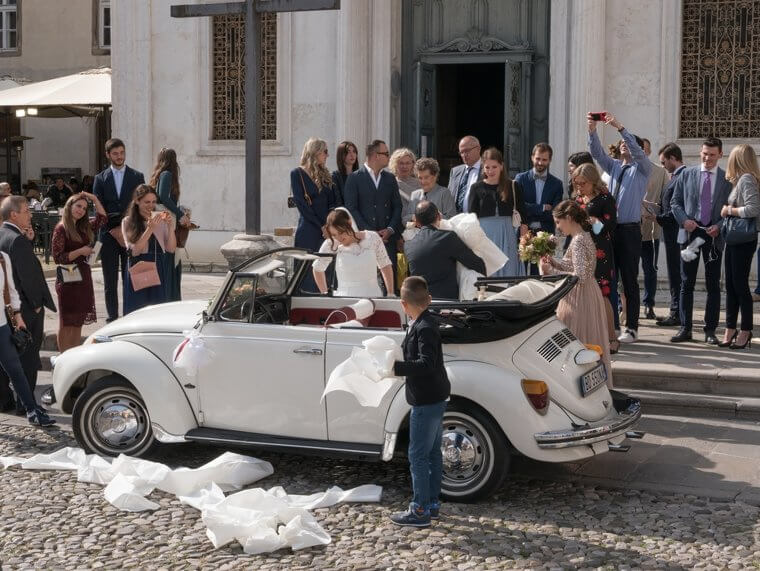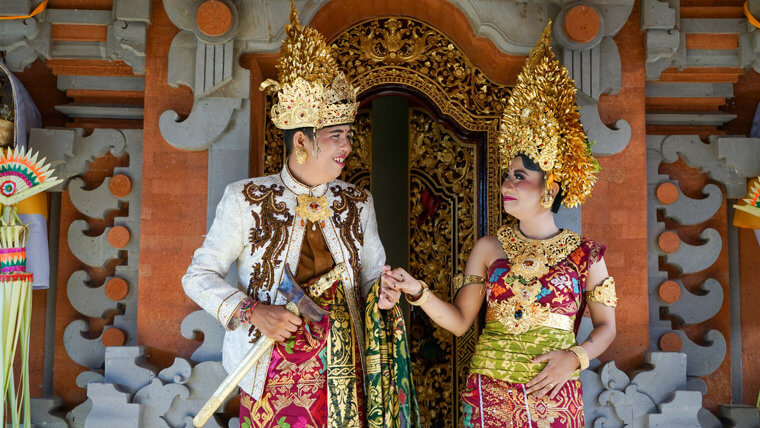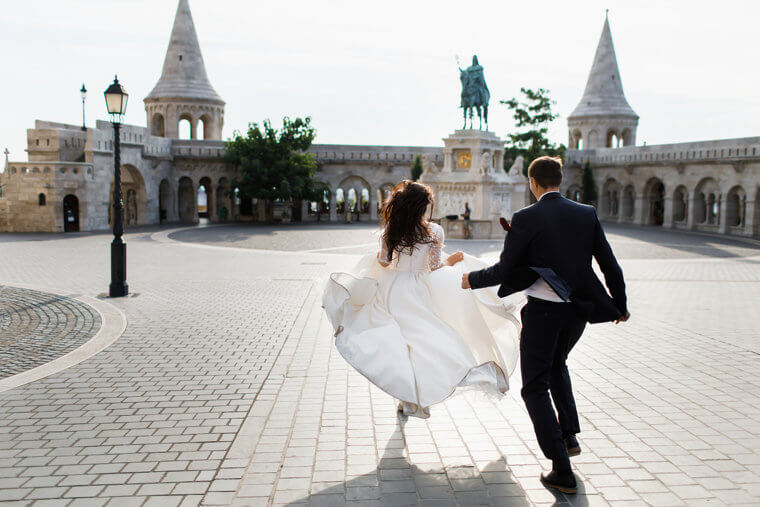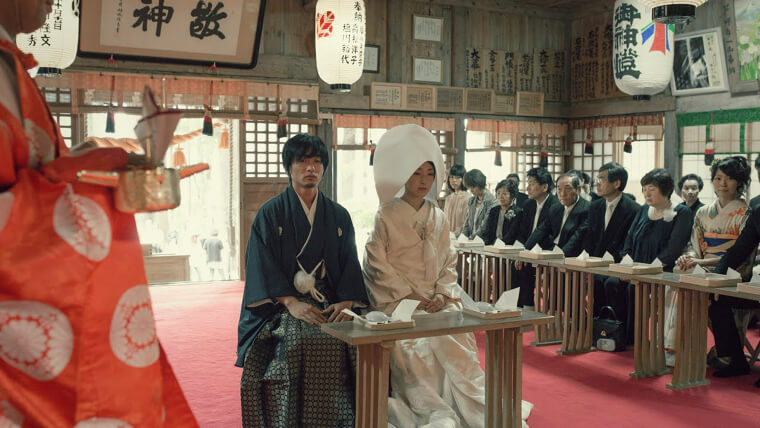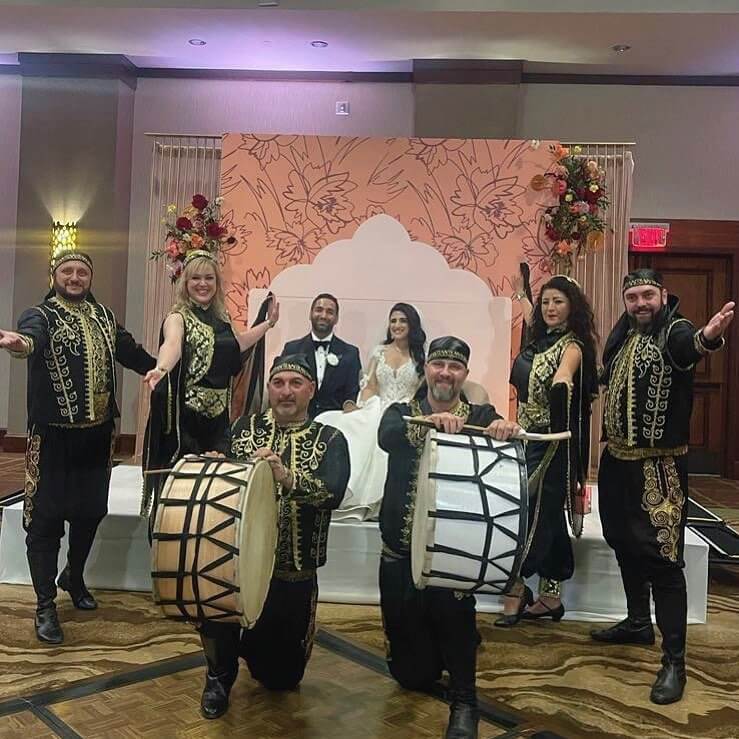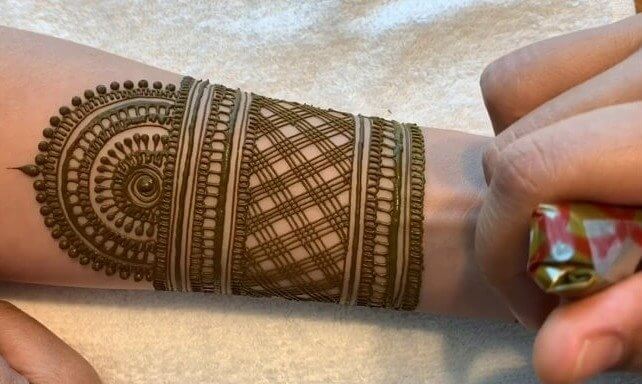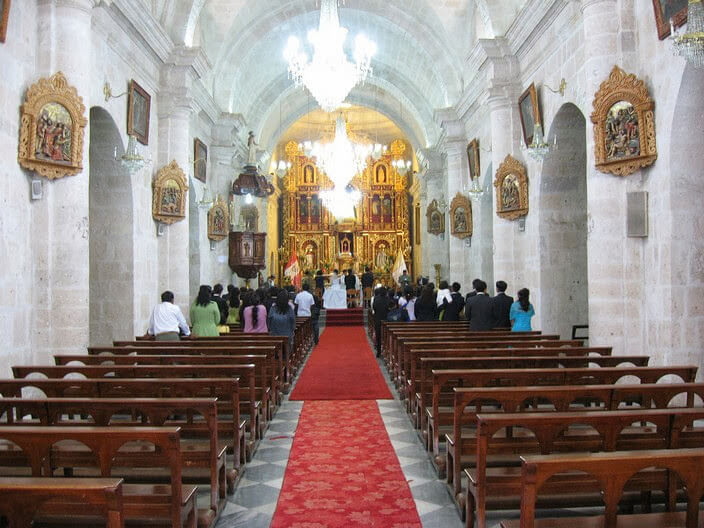Romania's Brides Get Kidnapped Until Grooms Give the Abductors Gifts
Abducting the bride seems to be a common tradition in many places in the world. In Romania, this tradition is taken pretty seriously, and once brides are kidnapped, grooms have to give the kidnappers gifts. These gifts sometimes come in the form of drinks, dares, or other tasks that the groom must complete in order to rescue the bride. Meanwhile, the bride is taken to the spot of her choice, where she relaxes until rescued.
Often, these spots include popular tourist attractions, so if you're ever in Romania and someone in a wedding dress, don't be too alarmed; it's just a special day for the lucky couple.
Russia's Bread-Biting Tradition Determines the Head of the Household
Russia might have figured out one of the best methods for determining who's going to be the head of the household. Russian weddings often feature a bread-sharing event in which only the bride and groom take part. They both try to take as big of a bite as they can out of a very salty piece of bread. It's thought that whoever takes the bigger bite is going to be the head of the household.
The couple also isn't allowed to use their hands. The bread, called "korovai," features different signs baked right into it that are meant to symbolize faithfulness, love, and wealth.
In Congo, the Bride and Groom Are Not Allowed to Smile During Their Big Day
Wedding photos from around the world are usually filled with smiling guests enjoying their time dancing and laughing. However, in Congo, marriage is meant to be taken much more seriously. The whole thing is meant to be taken so seriously that people are encouraged not to smile for photos. It's supposed to show that the happy couple is serious about their marriage and that they don't think of it as something trivial.
That said, we're sure that plenty of guests, and even probably the couple, can't help but smile or laugh at some point throughout the day, even if they have to avoid being seen.
Scottish Couples Walk Down the Aisle Covered in Mud, Flour, Feathers, and More
While the bride and groom are usually meant to look their best on their wedding day, this Scottish tradition sees couples covered in mud, flour, feathers, and just about anything else friends can find. The happy couple is carried away right before their ceremony, to be covered by friends, before being brought back and having to walk down the aisle covered in mud. The tradition is thought to ward off evil spirits.
The couple is also paraded through the town in their muddy state right before they're carried back to the ceremony. We're sure the friends also get an earful from the bride and groom after the ceremony.
Extravagant Kazakh Wedding Dresses and Headdresses
The wedding dresses that are found in Kazakhstan are perhaps among the most extravagant on this list. And the tall hat worn by brides is often the most expensive part of a Kazahk wedding dress. If you're a wealthy bride, then the top portion of your hat will often be decorated in semi-precious stones, gold thread, or blue velvet. These hats are called "saukeles," and they could traditionally sometimes reach heights of up to 70 centimeters.
Cheaper variations might use decorations such as beads or satin, but they're still usually just as ornately decorated. These ornate headdresses historically had to be ordered a year or more in advance.
Chinese Weddings Include A "Good Luck Woman" Who Goes Home With the Couple
Chinese culture is filled with different traditions that focus on luck. However, not many know that luck also plays an important role during Chinese wedding celebrations. The family of Chinese brides will usually hire what's called a "good luck woman" to follow the bride and groom to their home and make sure that everything is going just as planned. They're also sometimes given an extravagant car to drive or ride around in.
In China, brides also commonly wear red dresses, which are thought to symbolize good luck and prosperity. In addition, it's not uncommon for weddings to be held on days that end in "9," which is considered a number of good luck.
A Traditional Romanian Wedding Can Last up to Three Days
Wedding dresses in Romania, sometimes referred to as "fotă," can be extremely bright and ornate. These traditional dresses are usually accompanied by a headdress that's called a "maramă" that's often just as extravagantly decorated. To top everything off, brides wear a number of different colored beads during their ceremony. It's also not uncommon for grooms to wear similarly-decorated costumes that incorporate a number of beads and include a specially-decorated hat.
The wedding ceremony itself is also known for being extremely raucous, with some traditional ceremonies lasting as long as three days and filled with dancing and festivities.
France's Newlywed Tradition of Eating Wedding Leftovers From the Toilet
There are plenty of unique traditions on this list, but this tradition from France might be among the oddest on this list. It's customary for new couples to have a meal of leftover food and drink from the reception. However, this meal is had in a cleaned toilet bowl. Yeah, that's right, the bride and groom have a meal of leftovers from the toilet bowl. Of course, not everyone participates in this tradition.
However, the leftovers part of the tradition was eventually dropped, and it became something more of an ice cream dish. Still, we're sure that there's some hesitation on the side of new couples.
Amish Brides Sew Their Own Dresses
Traditional Amish communities are known for being entirely self-sufficient. So, it makes sense that Amish women sew their own dresses for their big day. The wedding dress is usually black or another dark color, but it does feature some elements in white, such as an apron. Grooms are also known to wear a black suit, which is, of course, sewn by someone in the community. They also wear black hats on their big day.
Unlike wedding dresses at other weddings, Amish women will usually keep their dresses and wear them for the rest of their lives. It's also not uncommon for them to be buried in their wedding dress.
In Fiji, the Groom Gifts the Bride's Father a (real) Whale's Tooth
While things like rings and flowers are popular staples of weddings around the world, another kind of gift reigns supreme in Fiji. Before asking for a potential bride's hand in marriage, grooms must first ask the bride's father, and they must also come bearing a whale's tooth. The tooth usually comes from a sperm whale, and it can cost hundreds of dollars or more apiece. Today, many of the whale's teeth come from whales that have washed up onshore.
The tradition is so culturally significant that Fiji even has a special exemption to import whale teeth, despite an international ban on the trading of whale parts. There is also an exemption in Tonga, where the teeth were traditionally procured.
Elaborate (and Extremely Heavy) Yemenite Jewish Headdresses and Jewelry
Yemenite Jewish weddings are probably known for their most elaborate feature, the "gargute," or headdress worn by the bride. These headdresses are decorated with ornate jewels and flowers, and they're thought to ward off evil. The bridal dress itself is sometimes laced with gold threads. Like other cultures in the Middle East and India, Henna is also common at Yemenite Jewish weddings. Less elaborate headdresses were also commonly worn outside of wedding ceremonies.
However, these didn't have the amount of decoration or splendor associated with wedding gargushes, which were often accompanied by gold and silver decorations and necklaces worn on the wedding day.
India's Ritual of Women Marrying Trees Before Marrying Their Husbands
There are plenty of superstitions throughout just about every culture, but this might be one of the cleverest tricks to avoiding a curse that we've ever seen. In Hindu culture in India, it's thought that if the time of your birth doesn't match your horoscope, it means bad news for your future marriage, so much so that brides are first encouraged to marry a tree before marrying their husbands.
The tree is then cut down, which is thought to take the place of the first husband, thereby ensuring that the bride's marriage to her actual groom is not cursed as it would've otherwise been.
Seeing the Bride and Groom Cleaning up Is a Regular Part of Czech Weddings
There are plenty of different traditions around the world that are meant to symbolize fertility and bring good luck to newlyweds in that department. However, weddings in the Czech Republic might just be the most fertility-centered of the bunch. It's common for newlyweds to hold a baby together right before the couple's ceremony. It's thought that this helps bless the new couple with good luck in the fertility department.
Right after the ceremony is over, they're showered with rice and lentils, which are symbols of fertility. There are also a couple of different traditions that involve broken cups and dishes - which the couple then cleans up together.
In the Philippines, Any Man Dancing With the Bride Must First Pin Money on Her Dress
One of the more expensive wedding traditions on this list, it's not uncommon for people to pin money onto a bride's wedding dress in the Philippines. Specifically, any male guest who wants to dance with the bride must first pin some money on her wedding dress, making attendance a rather expensive affair. We're sure the practice also really helps new couples start their lives together and maybe even pay for a vacation or two.
There are a couple of different variations to this tradition celebrated by different cultures throughout the world, including in Greece, Poland, and the United States, among other places.
Gora's Ancient Face Painting Custom for the Bride
Gora is a region located between Kosovo and Albania, and the region is home to the Gorani people. The Goranis are ethnically Slavic, but the primary religion among the Gorani is Islam. They also have some of the most unique wedding traditions in the world. Gorani brides have their faces painted in extravagant patterns before they're married. These patterns, although different, always include three distinct circles — one on each cheek and another on the chin.
In addition, brides are always picked up by a white horse, and they're then taken to the groom's neighbor's house, where the wedding ceremony takes place. It's believed that many of these traditions have roots in ancient pagan practices.
In China, Some Brides Practice Crying for Their Wedding Ceremony for an Entire Month Before
While most big days are filled with laughter and joy, weddings in China are sometimes filled with something else. It's traditional for brides to cry on their wedding day. The custom is considered so important that some brides will begin practicing crying around a month before their actual wedding. We'd probably have to practice, too, if we were expected to cry on one of the happiest days of our lives.
To make sure that brides are actually able to cry on their wedding day, family members will sometimes check in on a bride to make sure that she's practicing for the wedding.
Armenian Brides and Grooms Balance Bread on Their Shoulders to Ward off Bad Spirits
Bread is a common staple item in many wedding traditions, but in Armenia, it's meant to be balanced on your shoulders. Both the bride and the groom will balance flatbread on their shoulders during the wedding ceremony. As with many traditions around the world, this tradition is meant to ward off evil spirits. Afterward, everyone retreats to the groom's home, where a dish is broken, and bread and honey are consumed to signify happiness.
Both of these traditions sound especially appetizing, even more so considering that Armenia is known for all of the different types of traditional bread the country produces.
South Korea's Falaka Tradition Involves Tying up and Beating the Groom's Feet
Not many people think of South Korea when they think of unique wedding traditions, but they really should. The country is home to a tradition referred to as "falaka." Friends of the groom will tie him up and lay him down on the floor. They then begin quizzing him, which sounds harmless enough, until you hear that they also beat his feet with a stick or dried fish while all this is going on.
The ritual is supposed to be a test of how attentive he can be while also supposedly preparing him for his wedding night. Luckily, the whole thing apparently doesn't last too long.
Saudi Weddings Have a Reputation for Being Beyond Extravagant (and Expensive)
Weddings in Saudi Arabia are notoriously expensive affairs. Couples will often rent out huge ballrooms or other types of venues for their wedding ceremony, which is segregated between men and women. Guests can expect halls filled with food and live music. Dancing is also extremely common at Saudi weddings. These celebrations also usually don't include a religious ceremony; instead, they're just more like grand parties to celebrate the bride and groom.
These extravagant ceremonies have been described by publications like National Geographic as more akin to a "combination of a fashion show and a bachelorette party," which sounds like quite the celebration.
Carving Spoons Before Welsh Weddings
This is another pretty unique tradition, and it can be found in Wales. Grooms and select others are required to carve wooden spoons. The act is supposed to show dedication, but there is another purpose for this tradition. Sometimes, a groom will mark a spoon with the number of children that he wants. The act of carving a spoon is also meant to reflect how the women in his life helped shape him.
A "lovespoon," as they're sometimes called, will also sometimes include other symbols of love, but we're sure that the intricacy of a spoon depends entirely on the groom's woodworking skills.
At Pakistani Weddings, the Groom and Bride Are Called "boy" and "girl"
There are a number of different traditions associated with weddings in Pakistan, but most of them all have one thing in common — they're all meant to symbolize and extoll youth. It doesn't matter how old the couple actually is; they're always called "boy" and "girl." The bride also has her face rubbed with turmeric, which is believed to make people look more glowing. There are also a number of different traditional Pakistani-style wedding dresses.
Historically, a Pakistani wedding would have included multiple different traditions and ceremonies over consecutive nights, but that has been cut down to fewer and fewer nights before the actual wedding in recent years.
Peru's Incan-Inspired Wedding Attire
Peruvian wedding dresses just might be some of the most colorful on this list, and there's good reason for it. Peruvian wedding dresses draw inspiration from the Incan Empire that once ruled throughout modern-day Peru. That's the same Incan Empire that's responsible for building grand cities, such as Macchu Picchu. Peruvian brides wear brightly-colored skirts, while grooms will wear headdresses. Wedding cakes are also usually the same color as a couple's cloak or poncho.
There's also one more tradition, where a ring is tied to a ribbon and hidden inside the brightly colored wedding cake. Single women will come up to the cake in hopes of pulling the ribbon the ring is attached to, similar to the Western tradition of throwing a bouquet of flowers.
In the Caucuses, Grooms Carry Swords and the Bride's Family Kidnaps Her
If you know anything about the Caucuses in and around Georgia, then you know that the region has a history of fighting for its survival. It's been invaded numerous times by just about every large empire in the region — and there have been many. Because of this, it's common to see wedding ceremonies that are filled with swords and symbolic gestures of protection. For example, grooms commonly wear sheathed swords during ceremonies, while brides are carried underneath a canopy to symbolize that they will be protected.
A bride will also commonly be kidnapped by her family after a ceremony in order for the groom to show that he is able to rescue her.
Grooms in Russia Must Serenade the Bride's Family Prior to the Wedding
The act or tradition of giving gifts to the bride or her family is pretty common throughout a lot of cultures. However, Russian grooms are expected to go a step further. They must visit the bride's family before the wedding and offer gifts, such as money or other forms of payment. This is all done to prove that a groom is "worthy" of marrying the bride-to-be before the wedding.
In a twist, the groom also usually sings to the bride's family during this ceremony, at least until the family asks him to stop, which probably isn't too far into the performance in most cases.
Traditional Greek Weddings Include the Groomsmen Shaving the Groom
Every groom or bride wants to look their absolute best on their wedding day, whether that involves wearing something like a tuxedo or making sure that you shave beforehand. However, if you're the groom and you're having a traditional Greek wedding, then there's no need to actually shave yourself because your groomsmen do it for you. The best man is officially responsible for the whole affair, but all of the groomsmen take part.
It sounds kind of relaxing, but we're sure that not every groomsman out there has a steady enough hand to shave someone's face, especially not when we imagine the whole ordeal is filled with laughter.
Here's Why the Groom Himself Puts the Veil Over the Bride's Face in Traditional Jewish Weddings
While grooms usually unveil the bride during a wedding ceremony, the opposite actually happens during traditional Jewish weddings. During the actual ceremony, a Jewish groom will take the bride's veil and place it over her face. There are a couple of different reasons for this. The act is supposed to signify that they are still two individuals, as well as represent the groom's love for the bride's inner beauty.
In addition, the tradition has roots in the Old Testament, when Jacob was fooled into marrying someone other than the woman he loved because of the veil over her face.
Traditional Dress And Face Paintings Found In Papua New Guinea
Weddings in Papua New Guinea truly are a communal affair. These celebrations see the entire community or village take part. The ceremony includes plenty of dancing, feasting, and elaborate face paintings. Bridal gowns take the form of a dyed grass skirt and other accessories, such as seashells and necklaces. The community may also roast a whole pig or crocodile for the festivity, which is capped off with gifts and more dancing and singing.
Part of the wedding ceremony includes the bride and her party carrying clay pots to meet the groom. The pots, such as the ones pictured in this photo, are symbolic and filled with fire.
Ceremonial Polish Flower Caps
Flowers are a staple at pretty much any wedding, but they play an especially important role in Polish weddings. Brides commonly wear a bouquet of flowers on their heads. The bouquets are called "welons," and they're meant to keep a bride happy, as it's believed a bride can die from unhappiness right before marriage. Grooms also wear a flower on their dress that matches the welon worn by the bride.
In addition, it's not uncommon to see a Polish bride continually trying to cover the groom's feet with her dress, which acts sort of like a display of dominance in the relationship.
Portugal's History Inspired Wedding Attire
The Iberian peninsula is steeped in history, so it's no surprise that Portugal's traditional wedding ceremonies draw upon some of that history. Wedding dresses in Portugal borrow a couple of different aspects from some of the cultures that have called the area home throughout the centuries. For example, brides traditionally wear beads that harken back to when the Moors conquered most of the peninsula. Jewelry also commonly includes crosses — a nod to the country's Catholic heritage.
Gold, a reference to Portuguese royalty, is also very common at weddings, and it used to serve as part of a bride's dowry. Today, it's worn more for ceremonial purposes.
Mexico's Lasso Tradition For Newlyweds
This marriage tradition is pretty cool if you ask us. In Mexico, couples are wrapped with a lasso that's usually made of rosary beads decorated with flowers and sometimes other ornaments. The couple still wears the traditional wedding dress and tuxedo, and the lasso is only worn during the actual marriage ceremony. As you might've guessed, the lasso is shaped like the infinity symbol, and it's meant to represent the timelessness of their love for one another.
There are also other countries that make use of the same tradition, including the Phillippines and Spain, and the tradition is mainly associated with Catholic weddings, usually held in a church.
The Nature-Inspired Dresses Of A Tongan Wedding
Tongan weddings are filled with symbolic references to nature. Perhaps the most obvious reference comes in the form of the Tongan wedding attire worn by both the bride and the groom. Both outfits are handmade, but the groom's attire features a colorful wrap that covers their body from the waist down, while the bride's outfit is more of a dress made in a similar pattern. Tongan priests also usually wear feathered headdresses during ceremonies.
However, the most unique Tongan tradition is perhaps the canoe journey that the couple takes after the ceremony. They both board a canoe and ride it out to sea in order to symbolize the isolation of their love.
Canada's Silly Sock Dance Featuring the Bride and Groom's Unmarried Siblings
Sometimes, siblings or other family members are expected to perform roles in a wedding. In Canada, one tradition goes a step further and sees siblings from both families dance together while guests hurl money their way. Oh, and they have to wear outlandish socks while doing so to make things a bit more entertaining for the guests. At the end of this dance, the money is given to the married couple.
We're sure that the siblings taking part in the dance have a good time as well. How could you not while wearing crazy socks and dancing in a room full of spectators?
The Symbolism-Laden Bridal Gowns Of India
There's plenty of symbolism to just about any type of wedding ceremony you can think of, but the bridal gowns of India take that symbolism to an entirely different level. These red gowns, sometimes referred to as "sari," include 16 different embellishments that are thought to contribute to a happy and healthy marriage. Even the color of the dress — red, is meant to symbolize the rising sun and new beginnings.
Another important part of the costume is jewelry, which often includes bangles, bracelets, earrings, and necklaces, all of which are meant to symbolize something different. For example, bangles are meant to represent fertility.
Surprise Parties For Italy's Brides
This one is a bit rarer than some of the other traditions on this list, but it's still not that uncommon. Occasionally, Italian grooms will arrange surprise parties for their brides. The venue is usually outside the bride's place the day before the official wedding ceremony. The groom also usually sings to the bride before they and a group of friends go to attend an extravagant party somewhere at a different location.
This is probably one of the sweetest wedding traditions on this list, especially considering that the future husband sings their heart out the night before the wedding in front of a crowd of friends.
Indonesia's Stay-At-Home Weddings
Having a wedding at a private home isn't unheard of, but it's actually traditional in Indonesia. The country is home to a couple of different unique traditions, but perhaps one of the most common involves having the wedding ceremony at a private home. We like to think of it kind of like throwing a huge house party and inviting a ton of friends and family. Other traditions involve cutting the couple's hair.
The couple has their hair cut together before it's thrown in with some flowers and planted together. This is supposed to symbolize the two families growing together, which is honestly quite charming.
Newlyweds Try to Sneak Away During Their Wedding in Venezuela
We're pretty sure that everyone has tried sneaking quietly away from a party at one point or another. Well, in Venezuela, it's actually a wedding tradition for newlyweds to try and sneak out of their own party. Unfortunately, all of the wedding guests know this, too, and they'll try and catch the new couple trying to sneak away. However, we're sure the task gets much easier after guests start partying.
It's considered good luck to successfully sneak away from the party, but it's also considered good luck to notice that the groom and bride have snuck away, so it's a constant battle.
All White At Japanese Weddings
The color white is a common choice for wedding dresses around the world, but the color takes special precedence in Japan. As with other places, the color white is meant to symbolize purity, as well as a blank slate. Japanese brides usually wear a white kimono with a white headdress, and they'll also don white makeup for their big day, the latter of which is meant to suppress jealousy.
There's one more reason that women wear white at traditional Japanese weddings, and that's because white is the color of the dead, and it's meant to reflect a new beginning for the bride.
Lebanon's Raucous Zaffa Tradition
Lebanon is known for knowing how to throw a good party. So, it only makes sense that weddings in the country would take the form of elaborate celebrations. A Lebanese wedding party, or "zaffa" celebration, involves dancers, live music, and plenty of fun. Instruments usually include things like bagpipes and drums, while it's not uncommon to see belly dancers swaying to the music. After the celebration, the venue moves to the bride's home.
Here, both families spend some time together, and this is reportedly where the party really gets started. In all, a Lebanese wedding sounds like one extravagant festivity after another.
India's Henna Tattoo Tradition
While today, henna tattoos are common in a couple of different regions throughout the world, it's thought that the tradition probably originated in India. And it's still practiced at Indian weddings. Sometimes referred to as "mehendi," these elaborate designs will often last at least a couple of weeks and sometimes up to five. It's not uncommon for a bride to get their husband's name hidden in their tattoo somewhere.
Henna tattoos can also be incredibly elaborate, and they usually draw on traditional Indian designs and symbols. A ceremony for mehendi is usually held the night before the actual wedding.
Finding The Ring At A Peruvian Wedding
While most weddings involve some form of the bride throwing a bouquet of flowers to her bridesmaids, this tradition takes a different form in Peru. At Peruvian weddings, a ring tied to a ribbon is hidden within the wedding cake. The catch is that there are multiple ribbons coming out from within the cake, and only one of them is tied to an actual ring. That means nobody actually knows if they're going to pull the lucky ring.
Honestly, it sounds a bit more fun than trying to push people out of the way to grab a bouquet of flowers. It's also a bit more mysterious when nobody knows who's going to pull the ring.


